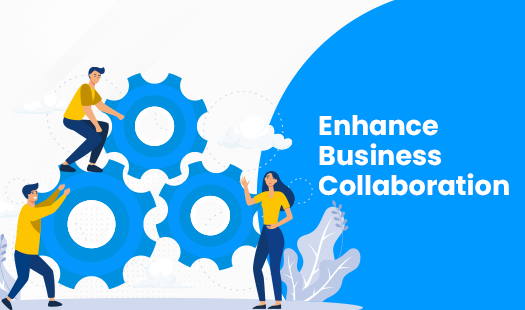
In today’s business landscape, partnerships serve as cornerstones for success. Training and nurturing these partnerships are essential for mutual growth. Enter Learning Experience Platforms (LXPs) – transformative tools capable of revolutionizing partner training initiatives. Here’s an in-depth exploration of five pivotal ways an LXP can bolster partner training across diverse industries, supported by real-world examples.
1. Tailored Learning Journeys for Partner Success
Partnerships thrive when both sides are equipped with the necessary knowledge and skills. LXPs pave the way for tailored learning experiences, allowing you to craft bespoke training paths for each partner. Utilizing AI algorithms, these platforms analyze partner profiles, preferences, and performance metrics, enabling the creation of personalized learning journeys. This tailored approach not only boosts engagement but also ensures partners acquire the specific competencies crucial for their success within your ecosystem.
Real-world Example: In the tech industry, Salesforce, a pioneer in cloud-based CRM, harnesses LXPs to train its partners worldwide. By utilizing AI-driven algorithms, Salesforce tailors learning paths for diverse partner roles. These paths encompass specialized modules on product knowledge, sales techniques, and customer service, aligning training precisely with partner needs.
Source: Salesforce Partner Learning
2. On-Demand Access to Rich Learning Resources
In the fast-paced world of partnerships, providing partners with on-demand access to rich and relevant learning resources is imperative. LXPs serve as comprehensive repositories of knowledge, offering a vast array of training materials, including videos, documents, interactive modules, and more. With the power of AI-driven content curation, these platforms ensure partners have access to the latest industry insights, best practices, and updates, empowering them to stay abreast of evolving market trends and strategies.
Real-world Example: In the financial sector, Mastercard engages its partners through an LXP, offering a rich repository of learning resources. From interactive modules on payment technologies to compliance training, Mastercard’s LXP provides partners with real-time access to updated content. This empowers partners to navigate evolving payment ecosystems effectively.
Source: Mastercard Academy
3. Foster Collaboration and Knowledge Exchange
Successful partnerships hinge on effective communication and knowledge sharing. LXPs foster a collaborative learning environment, allowing partners to engage with each other, share insights, and learn collectively. These platforms facilitate discussion forums, peer-to-peer learning spaces, and collaborative projects, fostering a sense of community and enabling partners to learn from one another’s experiences. Such collaboration not only enhances learning but also cultivates stronger bonds between partners.
Real-world Example: Within the healthcare sector, pharmaceutical giant Pfizer leverages LXPs to facilitate collaboration among partner healthcare providers. Pfizer’s LXP incorporates discussion forums and case-based learning to encourage knowledge exchange. This collaborative approach fosters shared expertise among healthcare professionals, improving patient care outcomes.
Source: Pfizer Partner Training
https://www.partner4better.com/
4. Assess and Track Partner Progress
Visibility into partner progress is crucial for assessing the effectiveness of training initiatives. LXPs provide robust analytics and tracking capabilities, offering insights into partner engagement, performance, and skill development. Leveraging these analytics, you can measure the impact of training programs, identify areas for improvement, and tailor future training initiatives based on partners’ strengths and weaknesses. Real-time tracking ensures that partners are consistently progressing towards achieving their goals within the partnership.
Real-world Example: In the automotive industry, BMW implements LXPs to track the progress of its dealership partners. By utilizing analytics-driven insights, BMW monitors partner engagement with training modules. This data allows BMW to identify areas for improvement, tailor training programs, and ensure partners consistently meet brand standards.
Source: BMW Partner Training
5. Adaptive Training for Continuous Growth
Partnerships operate in dynamic environments, requiring adaptive training approaches. LXPs excel in offering adaptive learning methodologies, such as microlearning and personalized skill development modules. These platforms break down training content into bite-sized, easily digestible modules, catering to partners’ preferences for flexible and on-demand learning. Furthermore, the AI-powered adaptability of LXPs ensures that training content evolves based on partners’ learning patterns and performance, fostering continuous growth and skill enhancement.
Real-world Example: Amazon Web Services (AWS) operates a robust partner network and employs LXPs to facilitate adaptive training for its partner ecosystem. AWS Partner Network (APN) offers a diverse range of cloud computing services, and to ensure partners maintain proficiency in utilizing these services, AWS provides continuous training through their LXP platform.
Source: Amazon Web Services (AWS) Partner Network –
LXPs are transformative tools that can significantly enhance partner training initiatives, fostering stronger, more resilient partnerships. By leveraging the capabilities of LXPs, businesses can create a conducive learning environment for partners, enabling them to thrive within the ecosystem. Tailored learning experiences, rich resources, collaborative spaces, analytics-driven insights, and adaptive training methodologies converge within LXPs to nurture informed, skilled, and engaged partners.
Embrace the power of LXPs in training your partners for business success and witness the profound impact of empowered partnerships on your organization’s growth trajectory.

